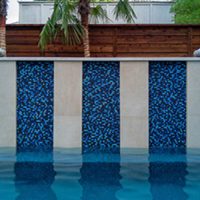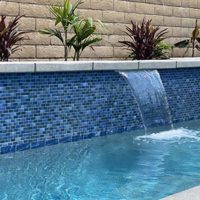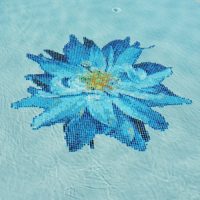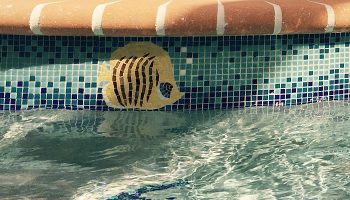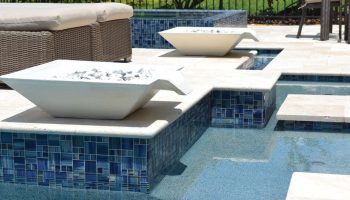SINCE 1984
Types of Swimming Pools & Spas
A swimming pool and spa can be an attractive feature that enhances your lifestyle and increases your property’s investment potential. As with any project this can become an asset or a liability depending on the amount of research you do prior to selecting the type of pool suitable for both the location and your budget.
Gunite Pools and Spas use a mixture of cement and sand sprayed onto contoured and supported surfaces to build a pool. Gunite is mixed and pumped to the site dry, and water is added at the point of application. Plaster is usually applied over the gunite. The plaster is actually the material that is visible and that comes into contact with the water (not the underlying gunite cement structure).
‘Gunite’ is a trade name for ‘dry gunned’ concrete. The term ‘gunite’ has been used so much that, to most people, it means spray-applied concrete. People often talk about a gunite pool – meaning a concrete pool where the concrete is pneumatically applied or sprayed in place using air pressure. People in the concrete spraying business have started using the term ‘dry gun’ to delineate this process. Gunite has been used for pools for over thirty years.
‘Dry gun’ means the cement and sand are injected into an air stream conveying it to the nozzle. The nozzle operator then adds the water at the nozzle and has total control of the water-cement ratio. The delivery hose of the mix is generally quite light, as the hose is mostly filled with air containing the mix of cement and sand.
Many Swimming Pool Contractors and homeowners prefer gunite because gunite inground pools and spas can be built to any design and shape and are a good ‘fit’ for a homeowner with vision. If you have a unique pool in mind, your pool builder can assist you with the design and offer suggestions for creating a gunite deck as well as gunite pool. Gunite lends itself especially well to freeform pools with flowing shapes with graceful curves.
Poured-concrete and masonry block pools and spas have been the standard of high end pool construction and are generally the most expensive methods of constructing a concrete pool today. The two types both consist of having a rigid reinforced concrete foundation onto which either masonry block walls or cast in place concrete walls are constructed. If blocks are used, the blocks are stacked on the poured concrete footing. Both of these pools are extremely durable but at the same time are not suitable to all installations. Some small contractors favor masonry block pools as there is a minimum outlay for equipment.
There are two kinds of blocks: Normal or Interlocking. Interlocking blocks (not available in all areas) are easier to handle. Because of the rectangular shape of the blocks, most pools build with masonry blocks have straight lines and are rectangular, wedge-shaped, L-shaped, or T-shaped. Curves can be incorporated into the design, but they should have not less than a 3 meter radius.
Due to the extreme weight of these pools they must be placed with footings onto bedrock to avoid shifting and cracking. A monolithic pour is done for the slab (footing and slab simultaneously). After pouring, the floor is then troweled smooth. Rebar is extended from the slab to go inside the block cavity (or cast in place concrete walls). This firmly anchors the wall to the floor. Horizontal rebar is also placed in the walls as well to give them strength. As the walls go up, openings must be left for plumbing and underwater lights. A plaster coating is applied as a last step before coating or tiling the pool. Tile is easier to install on this type of pool, as there is no cove or radiuses at the floor level of the wall and the floor is flat.
Infinity Pools allow one side of the pool to cascade water over the edge to a trough below will only work on a very stable site where the pool can be anchored to bedrock…it only requires a millimeter or so of ground shift and this type of pool will no longer function…and it is virtually impossible to correct after the fact.
While all of these pools have specifically associated pros and cons the most important thing to do is to make sure that the type of pool that you want is suitable to the location in which you wish to construct. A well-designed pool can be an asset to your property for many years, a badly designed pool will only be a liability with continual maintenance problems.
In-ground pools come in a variety of forms, methods of construction and costs. It is important prior to selecting the pool you want to have your property surveyed by a professional to determine your options. As all in ground swimming pools can be greatly affected by the amount of groundwater, the type of soil, the inclination of the land, the absence of bedrock, etc. it is extremely important to know what lies beneath the surface prior to selecting the type of pool you want.
Pools and Spas may be plastered and coated or clad with glass, stone or ceramic mosaic tile. This is a decision to make very early in the design stage.
Swimming Pool & Spa Construction
You have decided to build a pool and spa. You have chosen a swimming pool contractor with good credentials and a portfolio that proves it. What comes next? The phases of pool and spa construction are described below may vary from pool builder to pool builder.
Layout & Design: This phase is the design and layout of your new pool after permitting. Things to consider would be yard elevations, existing plumbing and electrical lines, existing landscape, easements, setbacks and building ordinances.
Concrete Shell: Once you have chosen a design and approved the blueprints, construction begins. The first step is excavation of the dirt in the shape of the swimming pool. The dirt is excavated and inspected by your local building department. Rebar is used to form the shell. Concrete is ‘shot’ into the hole forming the ‘shell of the pool and spa. Many European pools use concrete blocks for building the pool walls.
Gunite pools are the most popular design in much of the United States. To build one of these pools, the construction crew digs a hole, puts the plumbing in place and assembles a framework grid with 3/8-inch steel reinforcing rods (rebar). The rebar rods are spaced about 10 inches apart, and secured together with wire. When the grid is in place, the crew sprays a heavy coating of gunite, a mixture of cement and sand, around the rebar. The sprayer unit combines dry gunite mix with water just before spraying – this produces the wet concrete material. The crew trowels the gunite smooth and lets it sit for a week or so before applying a smooth finish to the rough surface. The most popular finish is called plaster (actually a mixture of cement and marble sand).
Electrical & Plumbing: After the concrete is poured, the tile (ceramic, glass or stone) that you have chosen and the plumbing lines will be installed. It’s important to have a schematic of the plumbing lines kept on file for future reference. Next, a certified electrician will come in and run the necessary electrical conduit and wire.
Decking: Layout and form work begins on your decking after the electrical has been completed. At this point you need to consider if you need water or electrical lines run under your deck into any planters you may have. You may choose a concrete deck or a paver deck – installations are different for each and your contractor will explain those installation processes. Concrete decks may be clad with marble, flagstone and other stones. The addition of mosaics is also an option. Mosaics are typically stone and may be ordered polished or unpolished. Mosaics may be pebbles, a uniform square pattern or custom artwork that is either handcut or created from individual square. Most mosaics used for decking surfaces have a mesh backing, which makes them easier to install.
Filtration Equipment: Once your deck is installed, the plumbing or filtration equipment will be installed and final wiring hook up by the electrician. If your house is under construction, have your electrician run conduit lines from where your pool equipment will set outside, to your breaker panel in the house. Also, have a line run from your equipment to a wall switch inside your home to control your pool light or for computer automation. These two things will save time, money and destruction later when you house is complete, and the pool goes in.
Interior Finish
No matter what type of pool and spa is constructed, an interior finish must be applied to provide a waterproof surface.
You must decide before building your pool if you are to use glass, stone or ceramic mosaic for cladding the pool floor, walls and waterline. The pool builder will need to make the walls, steps and floor plaster smooth in readiness for an all-tile pool. Steps and walls must be perfectly ‘true’ (symmetrical, level and uniform in measurement).
If your pool is a standard one, standard finishes are exposed aggregate or marcite. This type of pool may have artistic elements applied to the floor, walls, steps etc. before the coating is applied. These art elements may be in glass, stone or ceramic. All artistic elements and the waterline are installed prior to coating the pool. Standard pool art elements may include a floor border and medallions or swimming dolphins, turtles, starfish, etc. The pool coating is applied up the the art element and waterline edges.
All-tile pools are tiled in Venetian Glass, Handcut Smalto Glass, Stone Mosaics or Handcut Stone Mosaics. The installer applies the tile to the surface of the finished plaster coating.
Gemstone may also be used for your pool, should it be high end. Solid gemstone mosaic may be substituted for a glass or stone waterline.
Venetian Glass or Stone may be either square shaped mosaics or handcut mosaics. Both choices are available with a mesh backing or paper face taped.
Setting methods for the above include mortar bed, fortified water resistant thinset or Epoxy. Grout may be a 25% sand mix that is fortified with a water resistant additive or epoxy. Only and experienced installer should be hired for an all-tile pool and spa.
Once the interior finish is complete your swimming pool is filled you are ready for happy swimming.

